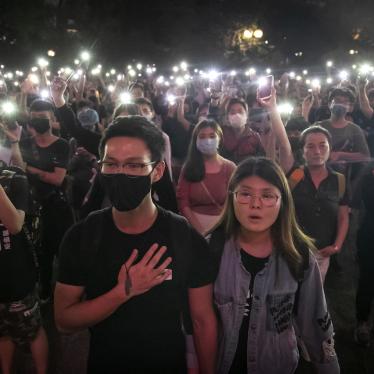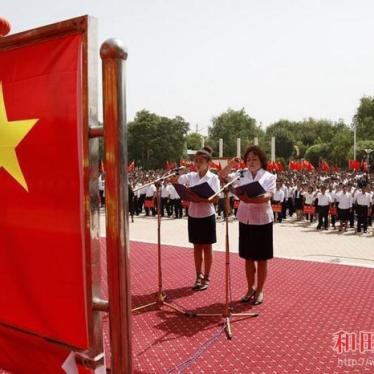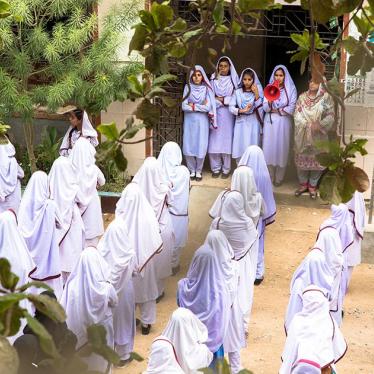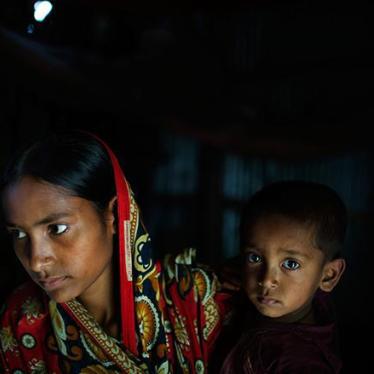- 印度任意关闭网路服务,对依赖政府社会保障以获取食物和生计的贫穷群体造成不相称损害。
- 在政府推动网路成为生活所有层面必需品的 “数字印度”时代,当局却把断网当作常态治安手段。
- 印度当局应杜绝侵犯人权的断网措施,以免对国家声誉和人民带来重创。
(新德里)-人权观察和网路自由基金会(Internet Freedom Foundation)今天发表报告指出,印度当局任意关闭网路,对依赖政府社会保障措施获得食物与生计的贫民造成不相称的损害。自2018年起,印度成为全世界断网次数最频繁的国家,妨碍该国正在推行的旗舰计画 “数字印度“,该计画将使常态的网路存取成为递送关键公共服务的必要条件。
这份82页的报告《‘没网路等于没工作、没收入、没饭吃’:关闭网络即剥夺‘数字印度’基本权利》发现,断网造成基本活动瘫痪,对印度国内法和国际法保障的经济、社会、文化权利带来不利影响。印度当局假借维护公共秩序之名,忽略最高法院关于程序保障的各项命令,而这些命令旨在确保断网措施是合法的、必要的、合乎比例的,并且在范围与地域上是有限的。中央与各邦政府当局切断网路存取的决定往往反覆无常且不合法,而且被用来阻碍抗议活动和防范考试作弊。
“在政府力推网路成为生活各层面基本要素的『数字印度』时代,有关当局却把断网当作常态的治安手段,” 人权观察亚洲区副主任杰希莉・巴裘利亚(Jayshree Bajoria)说。“切断网际网路存取应作为万不得己的最后手段,并备有确保人民生计与基本权利不受剥夺的保障机制。”
人权观察访问了包括断网直接受害者在内超过70人,受访者来自查谟和喀什米尔邦、拉贾斯坦邦、哈里亚纳邦、贾坎德邦、阿萨姆邦、曼尼普尔邦和梅加拉亚邦等地。由于完全无法取得有关断网的官方数据,追究断网责任十分困难。
印度为期最久的断网发生在查谟和喀什米尔邦;从2019年8月到2021年2月,政府切断4G移动网路存取长达550天。对此,最高法院于2020年1月就芭欣控印度联邦(Anuradha Bhasin v. Union of India)和阿萨德控印度联邦(Ghulam Nabi Azad v. Union of India)两案作出指标性判决,认定暂停网路服务是一种“激烈措施”,唯有当国家评估“其他侵扰性较低处置方式之存在”,并在“绝对必要”且 “不可避免”的情况下才能考虑采用。
印度管理断网措施的法条字眼过于宽泛,而且缺少适当保障机制。据人权观察和网路自由基金会调查,从前引最高法院判决到2022年12月31日的三年之间,共发生127次断网。同一期间,在印度全国28个邦之中,有18个邦至少断网一次。以上数据还没有算进查谟和喀什米尔邦,该邦政府实施断网的频率在全国无出其右。
各邦政府断网的案例中,有54例旨在防范或应对抗议活动,37例旨在预防学校考试或公务员招考舞弊,18例应对族群暴力,还有18例是为了处理其他治安问题。
18个邦之中有11个邦没有遵照最高法院指示公开发布断网命令。其他邦虽然发布,往往并未说明相关公共安全风险的合理依据。
印度全国各邦政府还以断网作为一种连坐处罚。 2023年3月,旁遮普邦全面切断境内移动网路服务三天,目的是搜捕一名分离主义领袖。 5月,曼尼普尔邦因族群暴力而将移动和固定网路服务彻底切断一整个月。
大部分断网措施只是切断手机上网。然而,这几乎等同于全面中止网路服务,因为印度百分之96的网路用户使用移动设备上网,只有百分之4用户能使用固定线路存取网路。移动连网在乡村地区更是不可或缺,因为百分之94的固定线路连结都集中在城市。
《圣雄甘地全国农村就业保障法》(全农保)为农村地区超过1亿户的家庭提供了必要收入保障。印度政府正逐步将这项福利数位化,包括其出勤打卡和工资给付方式,而这完全仰赖充足的上网服务。偏远地区的网路覆盖本来就很差,断网则使现况雪上加霜。
“我曾在全农保服务两年,”一位来自拉贾斯坦邦比尔瓦拉(Bhilwara)县、育有5名子女的35岁达利特(Dalit)妇女说。 “每当网路被切断,我就失去工作,没有收入,无法从我的帐户领钱,连食物券都没法领。”
断网还影响到另一项重要的社会保障政策,即依据《全国粮食安全法》透过定向公共分配制度发放获补贴的平价粮食。 2017年,作为政府社会保障数位化计画的一环,凡是符合补贴粮食配给资格者都必须将自己的配给卡连上Aadhaar,即该国基于生物辨识技术的身份识别系统。其结果是,全国各地的粮食分配站现在都必须通过网路连接Aadhaar识别系统。
断网也使农村居民更难进行基本的金融交易、支付水电帐单乃至申请和存取官方文件。
印度当局宣称,断网是为防范社交媒体谣言激起暴力行为,以及防止动员暴民的必要措施。然而,如同联合国人权专家于2015年《关于言论自由与应对冲突局势问题的联合宣言》所指出,即使在冲突时期, “利用通讯系统‘锁死开关’”(即关闭整个通讯系统)⋯都是绝对违反人权法的措施。 “
两机构指出,并无证据显示关闭网路能够有效维持治安。 2021年,由于印度政府无法提出有关证据,印度国会通讯和资讯科技常设委员会作成结论: “迄今并无任何证据表明关闭网际网路对解决公共紧急状况和保障公共安全确有实效。”
网路存取被公认为《公民权利和政治权利国际公约》及其他印度已加入的人权文书所保障的广泛人权所不可或缺的促进因素之一。联合国人权理事会于2016年通过严正谴责断网措施的决议,呼吁所有国家 “避免和停止这种措施”。多位联合国人权专家表示全面关闭网路违反国际人权法,联合国秘书长也在2021年再次强调在2030年前提供普遍的网际网路连接作为一项人权的必要性。
关闭网路也违背印度政府关于数位自由的承诺。 2022年6月,印度签署了七国集团与另外四国联合声明,承诺将确保 “开放、自由、全球性、可互操作、可靠、可访问和安全的网际网路。”
“印度政府不该再提出有关维护公共秩序的毫无说服力论点,而应关注断网措施如何全面扰乱人民生活,并在某些情况下导致不可逆转的伤害,”网路自由基金会执行长阿帕尔・古普塔(Apar Gupta)说。 “有关当局应该杜绝这种对国家声誉与人民造成重创的滥权措施。”






